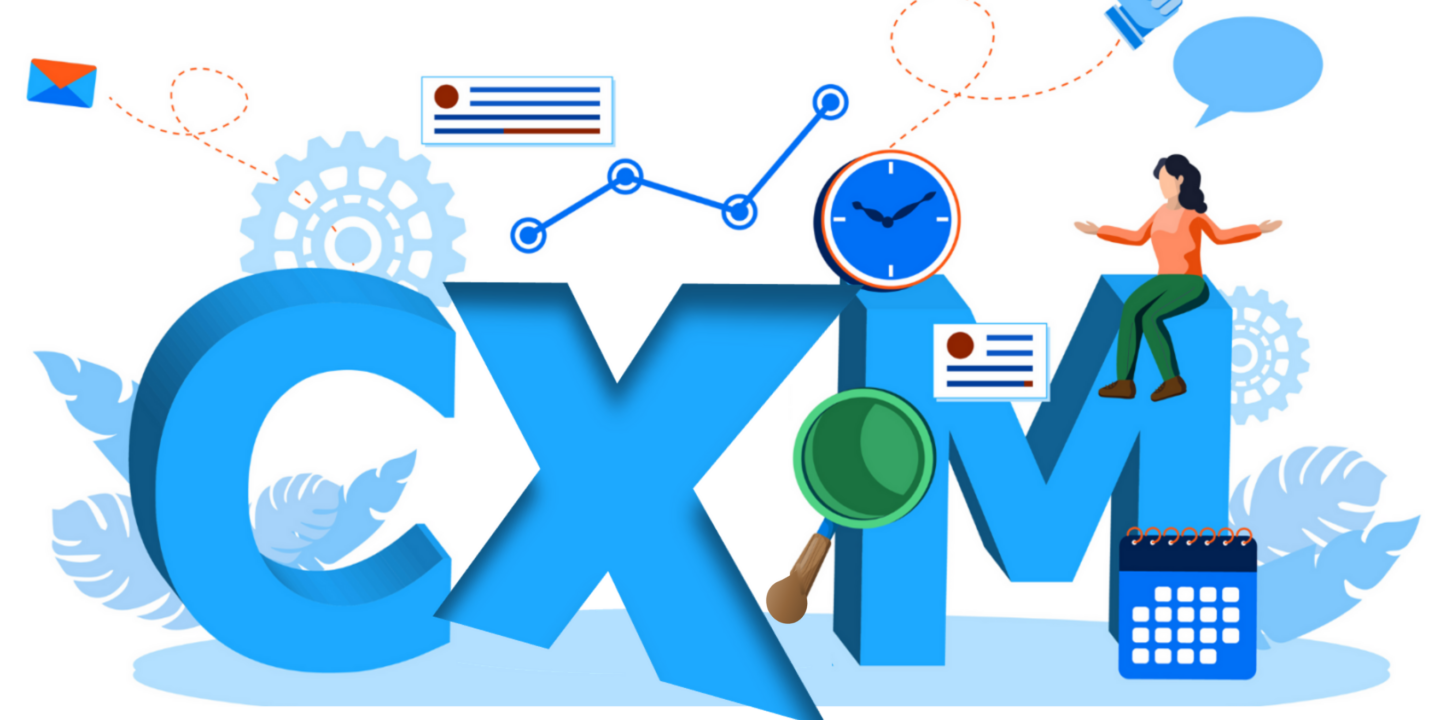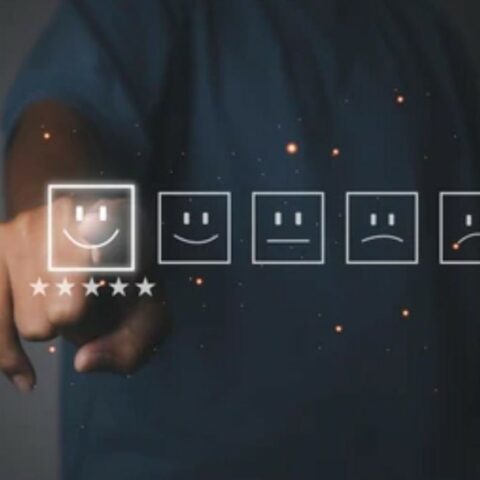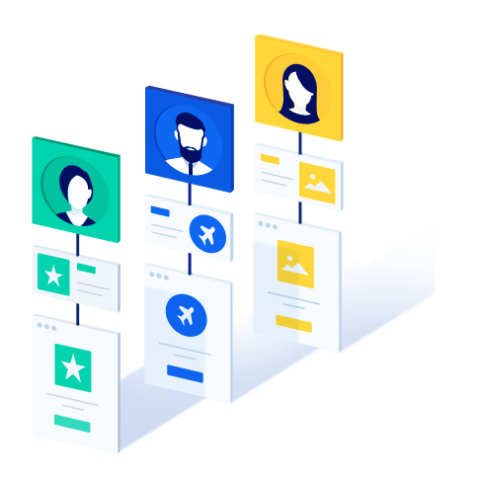
How to use customer data to reach growth KPIs
It’s been shown again and again and again that personalising customer experiences improves conversion rates. Customers expect personalisation.
Many insurers are keeping up, offering at least some degree of personalisation in the customer journey.
But a larger cohort of insurers faces persistent customer experience challenges:
- Lack of visibility over cross-channel customer journeys
- Inability to generate insight from customer data
- Stagnating contract renewal rates
- Frustrations with underperforming marketing automation tools
These factors culminate in below-average revenue results. If revenue does grow, it’s not sustainable or repeatable.
This is where customer experience management (CXM) and marketing automation tools become key enablers for organisational growth.
“CXM and martech are typically seen as the purview of marketers. They’re not. They’re company-wide, because they’re customer-facing.”
Key takeaway: Personalised customer experiences convert more business
Insurers who deliver personalised experiences and relate to customers will see more conversions, renewals, loyalty, and revenue.
Increase conversion rates
We’ll start at the top of the funnel for two reasons. Firstly, this is where most insurers lose sight of potential customers. And secondly, it’s where the most change is possible.
“Conversion rates” typically refer to the number of potential customers who submit an inquiry or take out a new policy.
But that’s not necessarily the whole picture.
B2C insurers can look at upselling to existing policyholders. Similarly, B2B insurers can look at cross-selling to bring more of their customers’ business into the fold.
There are three tactics we’ve seen work for increasing conversion rates.
1. Optimise and personalise site content
Presenting visitors with the right information at the right time makes for a seamless experience. Even seemingly minor personalisations, such as location-specific contact details (from IP addresses) or a “welcome back” message for returning visitors, encourage conversions.
Use what you know about a visitor to personalise their on-site experience. This is a three-step process:
- Create audience segments based on behaviour and preferences
- Track users with an integrated martech stack
- Tailor product recommendations and landing page content accordingly
The more sophisticated insurers can be with personalisation, the higher their likelihood of leading the industry.
Losing track of your potential customers? TAP CXM helps insurance marketing professionals with cross-channel customer tracking and on-site personalisation.
2. Enhance user experience across the conversion funnel
Conversion isn’t a linear process. Nor is it guaranteed, even with hyper-personalised on-site experiences.
Especially for big policy purchases, a customer will go through rounds of research and source multiple quotes before making a decision.
The insurer’s job is to furnish customers with useful information at the right time. Marketing automation tools do a lot of the heavy lifting here.
- Automating follow-up emails based on behaviour signals
- Pre-filling forms for returning visitors
- Automatically segmenting prospects based on their likelihood to purchase
- Alerting marketers when prospects are at risk of churning
3. Transfer leads to agents based on the likelihood of conversion
Marketing automation tools like Marketo Engage can help to identify leads who are likely to convert and alert a sales agent. Check out our previous guide to Marketo Sales Insight to learn more about alerting sales to ripe opportunities.
However, martech works best when marketing and sales teams are aligned on lead generation. This means they’ve done the work upfront to:
- Align sales and marketing strategies
- Establish a lead-scoring system
- Codify signals that indicate sales readiness
- Break down information siloes
“Sales and marketing alignment means everything that comes after is purpose-built for the customer. It also means marketers know when to hand off a contact, and salespeople don’t waste their time chasing low-potential leads.”
A quick note on data quality in customer experience management
In our experience, most of the data that insurers need to personalise on-site experiences already exists. The challenge is not a lack of data but an inability to identify useful signals from the information.
Often that’s a result of sub-par database management. This happens when organisations grow too quickly or bolt on martech solutions without considering long-term strategy.
As a CXM partner and technical consultant, TAP CXM helps brands generate returns on their martech investment. We don’t just look at technical performance, but also the strategy, people and processes surrounding the martech stack.
Get our free guide to investing in better marketing here.
Increase retention rate
There are two ways to calculate customer retention in the insurance marketing industry. The first is by looking at the overall number of customers in a certain time period, and the second is by analysing contract renewal rates.
General customer retention formula
Here’s a formula to calculate customer retention (and therefore churn) in a given time span:
[ (No. of customers on last day — No. of customers acquired) / No. of customers on start date] x 100
For example, if an insurer starts the year with 100 customers, acquires 12 new customers and finishes the year with 105, the formula looks like this:
[(105 – 12) / 100] x 100 = 93% retention rate.
Although this gives a headline retention figure, it doesn’t provide much useful insight into customer loyalty.
Contract renewal rates
Contract renewals are more valuable for uncovering customer loyalty insights and implementing CXM strategies.
In our experience, insurers require good customer data and a little custom reporting development to monitor renewal rates. The data is there; we just need to map it and make it available.
How insurers can improve renewal rates
Marketing automation tools, especially Adobe Campaign, enable insurers to send timely and relevant communications like renewal reminders, policy updates and promotional offers.
These communications should be tailored to the individual and streamlined for easy renewal. For example:
- Use personalisation blocks to tailor end-of-contract messaging
- Create micro-segments to personalise offers based on user data
- Pre-fill information on renewal forms
- Analyse policy data to show renewing customers the value of renewing
- Identify customers at risk of churning and engage them with a reactivation campaign
By demonstrating empathy for the customer’s needs and preferences, insurers can increase the likelihood of renewal, improve loyalty rates and reduce churn.
Increase customer lifetime value
Customer Lifetime Value, or CLV, is fairly self-explanatory. The goal for insurers is to deepen and widen their relationship with customers by cross- and upselling policy products.
Again, personalisation is essential. Offers must be relevant to the individual and supported by data that gives them a reason to switch insurers.
So, how do you know which customers are ready to hear about complementary products?
An integrated martech stack enables this kind of insight by tracking cross-channel journeys to create a 360° view of the customer’s needs, preferences, behaviour and conversion readiness.
Sophisticated insurers go further, using advanced predictive modelling tools like Adobe Analytics and behaviour-based triggers to automate cross and upsell offers. For example, we partnered with Petplan, part of Allianz Insurance, to implement end-to-end email communication improvements.
The result is greater visibility into customer data, dynamic personalisation capabilities and more effective email marketing.
“TAP are a trusted partner who adjust to extremely challenging client-side issues with ease, offering a dedicated service which runs consistently throughout the team… They have a rare ability to balance the blend of optimal capability and commercial delivery.” ~ Pete Honeywood, CRM Performance and Customer Experience Manager, Petplan
TAP CXM, the insurance industry’s trusted martech partner
If your martech isn’t working hard enough, we can help. TAP CXM partners with B2C and B2B brands, putting martech to work for seamless customer experiences.
Our experience partnering with some of the insurance industry’s biggest names and our deep technical expertise make us a trusted end-to-end partner.
But not about lofty promises or fancy presentations. We know the proof is in the pudding. Get in touch to speak with a results-focused CXM consultant who specialises in marketing for the insurance industry




